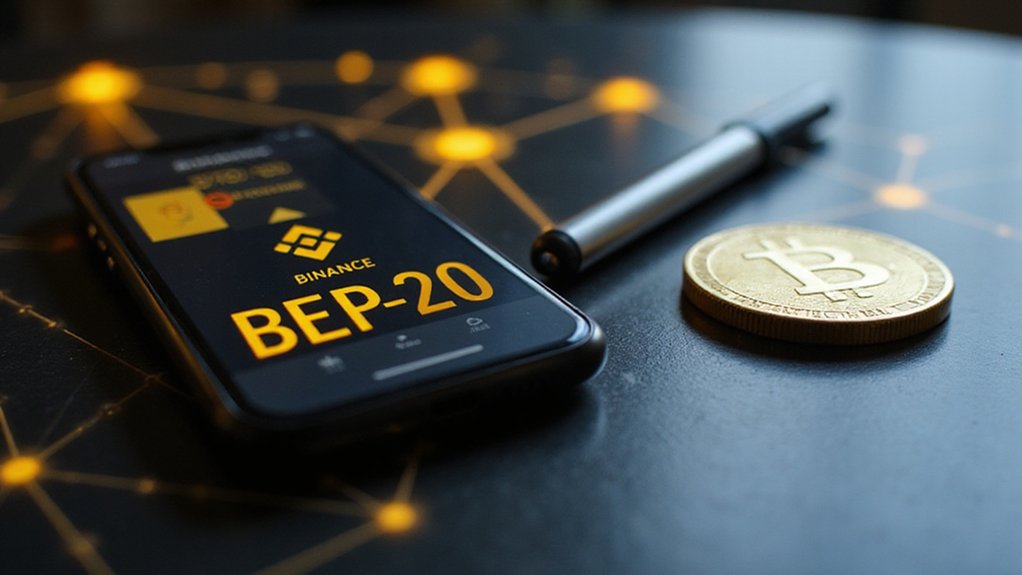Liquidity pools represent cryptocurrency’s elegant solution to traditional market-making—digital reservoirs where paired assets sit locked in smart contracts, perpetually ready for action. Operating via the constant product formula (x × y = k), these algorithmic marvels eliminate the need for buyers and sellers to synchronously meet, while rewarding providers with fee income despite the lurking specter of impermanent loss. The financial alchemy powering decentralized exchanges turns anyone with two tokens into a potential market maker, for better or worse.

The financial alchemy that powers decentralized finance—liquidity pools—represents perhaps the most elegant innovation to emerge from the cryptocurrency revolution.
These digital reservoirs of paired assets, locked within the mathematical confines of smart contracts, have fundamentally restructured how value exchanges occur in the blockchain ecosystem.
Unlike traditional markets requiring the fortuitous meeting of buyers and sellers (a quaint notion in today’s algorithmic age), liquidity pools stand perpetually ready to facilitate trades through their token reserves.
The algorithmic certainty of liquidity pools renders the serendipitous hunt for counterparties a charming but obsolete financial ritual.
At their essence, these pools operate on disarmingly simple principles.
Participants—known as liquidity providers—deposit equal values of two cryptocurrencies into a smart contract, creating a reservoir from which others can trade.
The pricing mechanism typically adheres to the constant product formula (x × y = k), a mathematical relationship ensuring that as one token’s quantity decreases, its relative price increases proportionally.¹
This algorithmic approach eliminates the need for order books or centralized market makers, instead allowing the invisible hand of mathematics to govern exchange rates with ruthless efficiency.
What makes these pools truly remarkable is their democratization of market-making.
Any individual, regardless of financial pedigree or institutional backing, can become a liquidity provider and earn passive income through transaction fees generated by the pool.
This opportunity comes with its peculiar risks, of course—chief among them “impermanent loss,” that curious phenomenon where token price divergence can leave providers with less value than had they simply held their assets (the financial equivalent of no good deed going unpunished).
Beyond mere trading functionality, liquidity pools form the cornerstone of the broader DeFi ecosystem, enabling lending protocols, yield farming strategies, and flash loans—those curious millisecond borrowing arrangements that would give traditional bankers apoplexy.
Liquidity providers receive LP tokens proportional to their contribution, which represent their ownership share in the pool and entitle them to a portion of collected trading fees.
These innovative systems help expand financial access to approximately 1.7 billion adults worldwide who remain unbanked and otherwise excluded from traditional financial services.
As platforms like Uniswap, Curve, and Balancer demonstrate, these pools have transformed cryptocurrency trading from a centralized, order-driven affair into an elegant, permissionless symphony of algorithmic balance and mathematical precision.
These pools leverage DEX platforms to ensure continuous liquidity availability without relying on traditional intermediaries, creating a more accessible trading environment for crypto assets of all types.
¹Though variations exist across different platforms, attempting to optimize for specific token characteristics.
Frequently Asked Questions
Are Liquidity Pools Safe for New Investors?
Liquidity pools present a formidable challenge for cryptocurrency neophytes, combining technical complexity with substantive risk factors.
New investors face potential smart contract vulnerabilities, impermanent loss, and the ever-present specter of exit scams—hardly a gentle introduction to DeFi.
While these mechanisms offer passive income through trading fees, novice participants would be well-advised to start with minimal capital, conduct diligent research on protocols (particularly those with thorough audits), and develop technical literacy before significant deployment.
How Do Impermanent Losses Affect Liquidity Providers?
Impermanent losses represent the silent tax that liquidity providers unwittingly pay when asset prices diverge from their initial deposit values.
When withdrawing from a pool after price fluctuations, LPs often discover they would have been better off simply holding their assets outright—a particularly cruel irony in volatile markets.
While trading fees might offset some damage, significant price divergence can eviscerate returns.
The “impermanent” label proves somewhat misleading; once providers exit positions, those losses become permanently realized.
Can Liquidity Pools Outperform Traditional Hodling Strategies?
Liquidity pools can outperform hodling in specific market conditions—particularly sideways or moderately volatile markets where trading fees accumulate substantially.
The equation tilts in favor of hodling during strong directional movements (where impermanent loss overwhelms fee income).
The ideal strategy often depends on asset correlation, fee structure, and market trajectory; stablecoin pairs typically offer more predictable returns than volatile token combinations.
Strategic LPs might hybridize approaches, allocating capital across both strategies to balance risk-adjusted returns.
Which DEXS Offer the Best Liquidity Pool Rewards?
Among the DEXs examined, Aerodrome SlipStream offers compelling rewards through passive $AERO token income and governance benefits, while Balancer’s dual-reward structure (trading fees plus BAL tokens) presents attractive diversification.
Uniswap, despite lacking native token incentives, leverages its massive volume to generate consistent fee income.
Bancor distinguishes itself with impermanent loss protection and single-sided staking options.
The “best” ultimately depends on one’s risk tolerance, capital constraints, and governance participation preferences.
What Tax Implications Exist for Liquidity Pool Earnings?
Liquidity pool earnings face a labyrinthine tax landscape where rewards may trigger both income tax (upon receipt) and capital gains (upon disposal).
The classification varies by jurisdiction—some authorities view LP tokens as taxable swap events, while others focus on the “beneficial ownership” principle.
Record-keeping becomes paramount, as participants must track entry/exit points and reward distributions with forensic precision.
Most jurisdictions remain frustratingly ambiguous about DeFi specifically, leaving participants to navigate traditional crypto tax frameworks by analogy.









